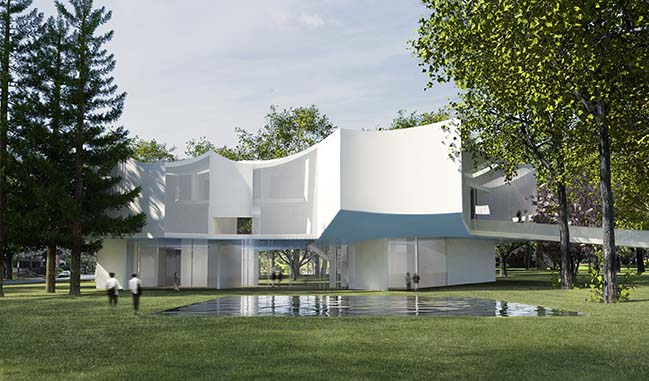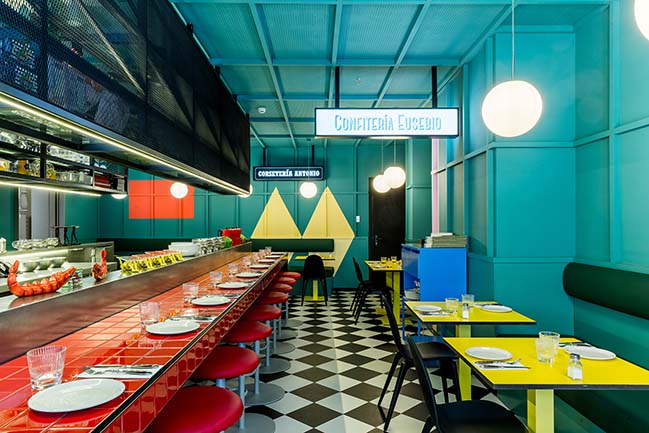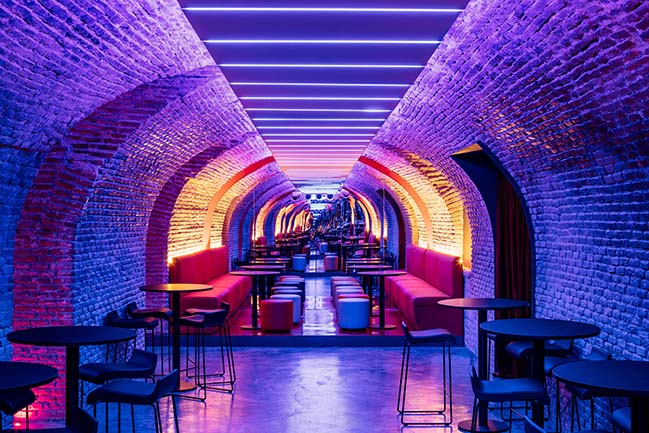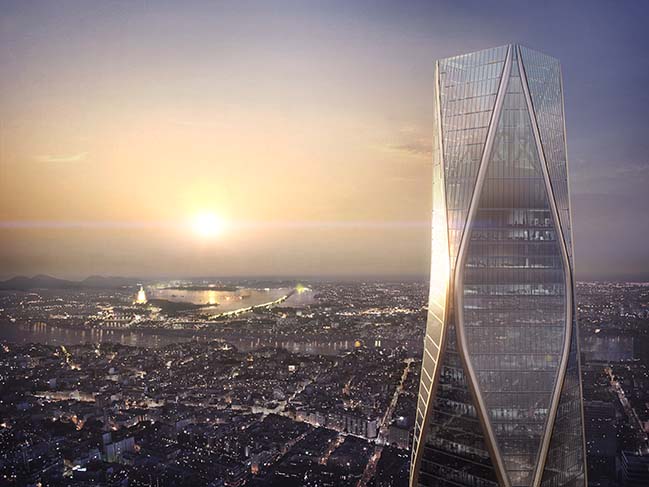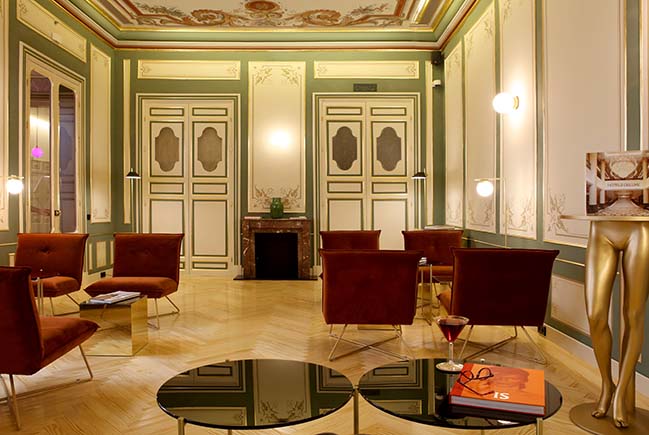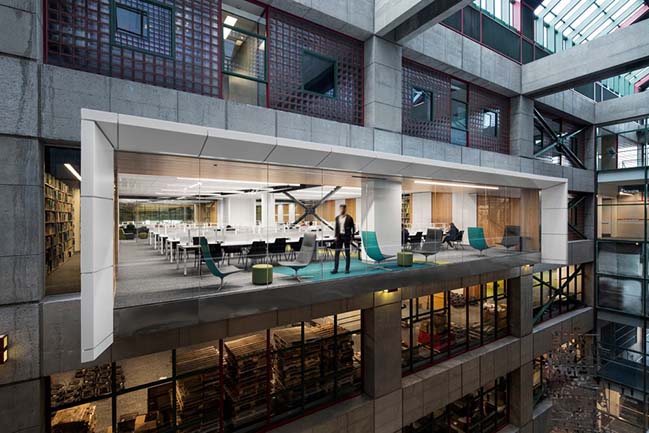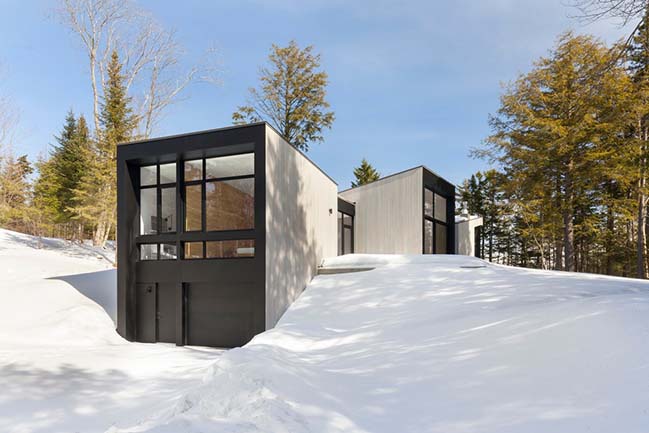04 / 05
2018
Timber Towers is a conceptual 62-story skyscraper by Hickok Cole Architects that consist of two office towers linked by a connecting bridge, and a third tower containing residential, school, and ground floor retail. Demonstrating the compatibility of mass timber across various sectors, Timber Towers stands out among a landscape of glass and concrete in Center City Philadelphia - a showcase of the possibilities of building tall with wood.
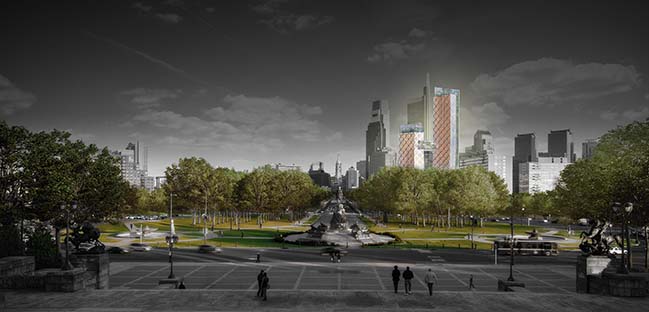
Architect: Hickok Cole Architects
Location: Philadelphia, USA
Team: Rosa Zlotkovsky, Sean McTaggart, Tony Maiolatesi
Images Courtesy of Hickok Cole
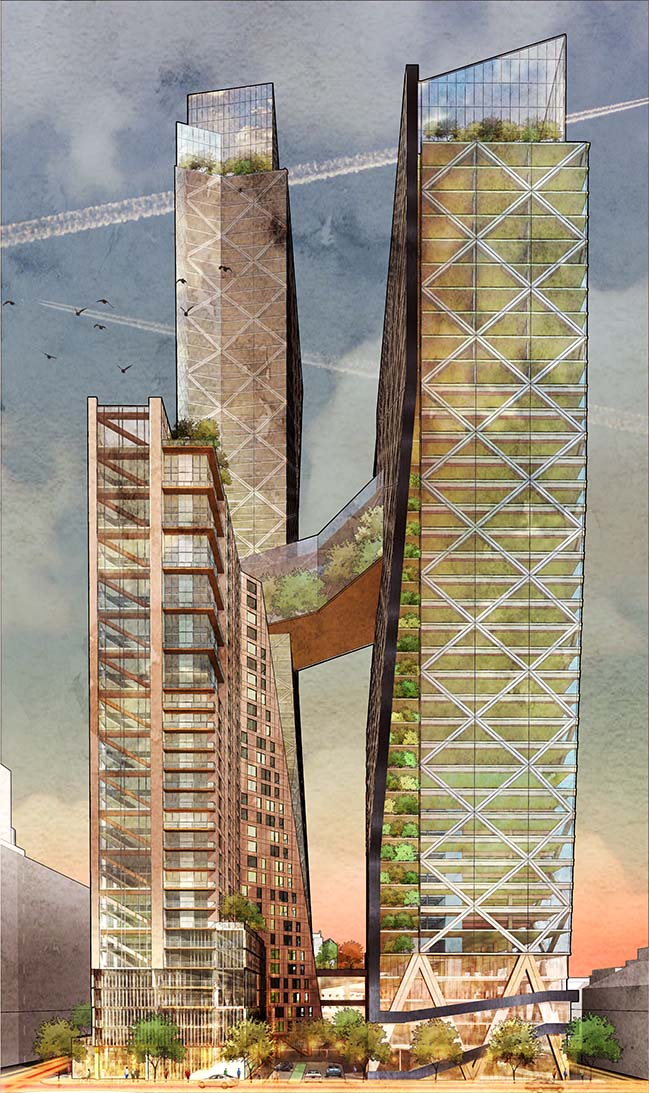
TACKLING CLIMATE CHANGE
A recent study* concluded that mass timber projects can reduce up to 75% of carbon emissions, compared to steel and concrete. Every ton of cement also results in a ton of C0₂ being released into the atmosphere. By comparison, just one single tree can sequester a ton of C0₂ in less than 40 years. Therefore, it is essential that young trees are sustainably harvested before the end of their useful life.
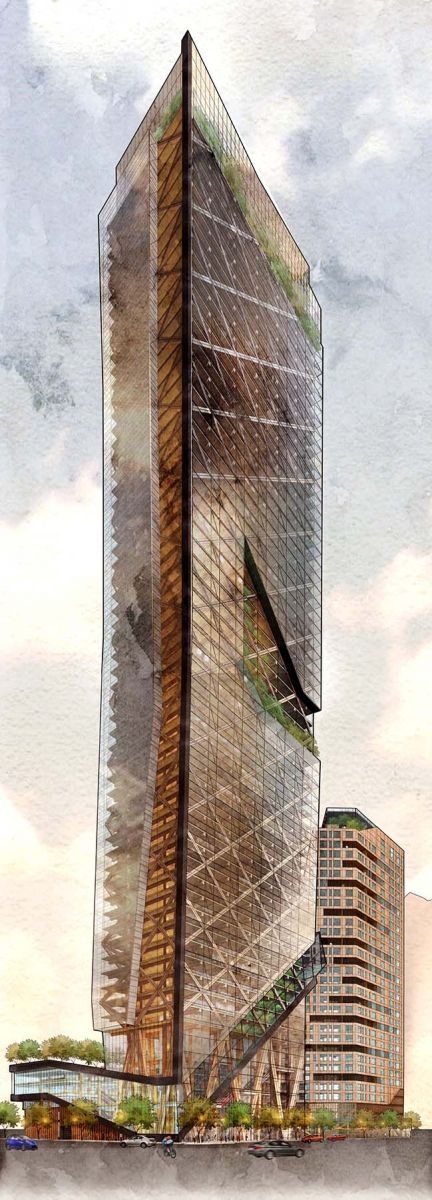
COST & SCHEDULE
Mass timber buildings typically consist of prefabricated components that can easily be assembled by a smaller construction crew, in a shorter period of time. This is less disruptive to the neighborhood, and on average results in a 20% reduction in the construction schedule. A 60-story office tower such as Timber Towers could theoretically be topped off six months sooner if constructed using mass timber.

SUSTAINABLE FORESTRY
Cutting down more trees sounds counterintuitive for sustainable planning. However, wood is the only structural material with a third party chain-of-custody certification process, such as FSC. Though several countries in tropical climates are yet to adapt this, in North America, growth exceeds harvest by 40%, and forests provide enough wood for a 20-story building every 13 minutes.
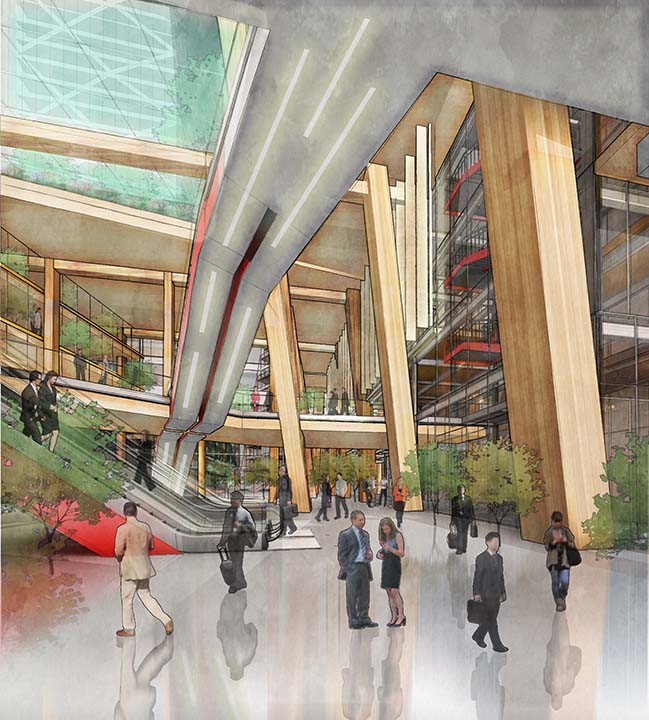
MATERIAL EXTRACTION
The extraction of materials from mines requires 5x more energy for steel and 24x more energy for concrete than it takes to harvest a ton of timber. This mining causes deforestation and severely damages habitats, and almost half of the water supply needed is wasted in the process. By comparison, 98% of a tree is utilized by a lumber mill for various purposes, with virtually no waste.
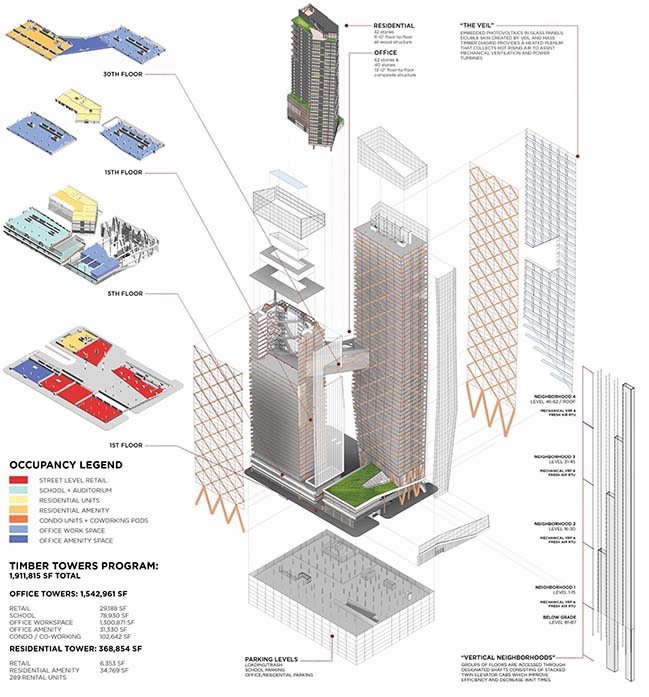
FIRE SAFETY BENEFITS
People often confuse mass timber with light frame construction, and have misconceptions regarding its fire safety. In the event of a fire, mass timber members quickly form a protective char layer, and actually survive longer than unprotected steel members. The thickness and density of mass timber allows it to serve as
a finish material that also provides necessary fire rating.
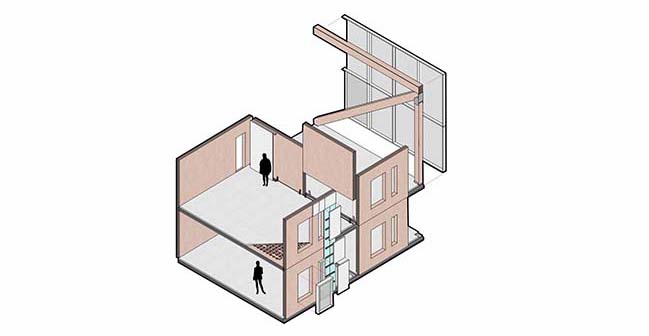
WELLNESS AND ENERGY SAVINGS
The thermal efficiency of wood is 15 times that of concrete, and 400 times that of steel. The use of mass timber also taps into biophilic benefits, in that people are inherently attracted to the material, and typically prefer natural materials to steel and concrete. Projects using CLT in the western United States are already reporting premium rent increases of up to $10 per square foot.
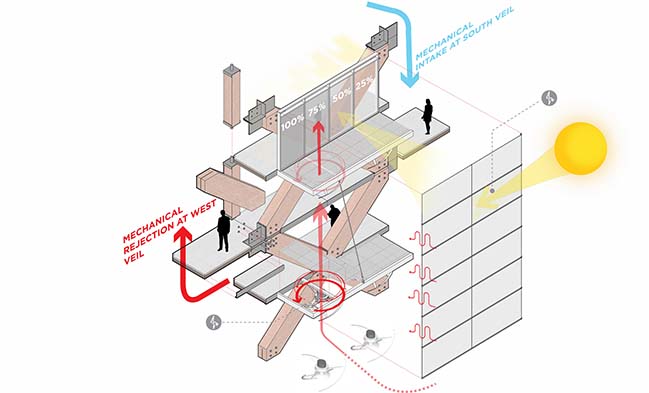
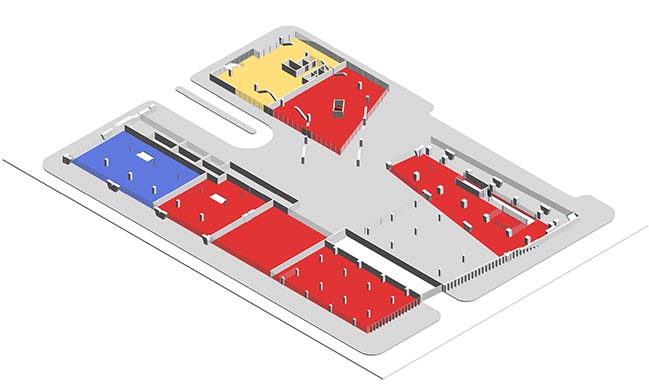
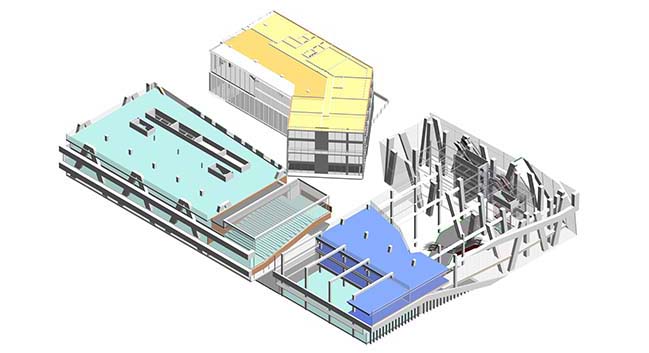

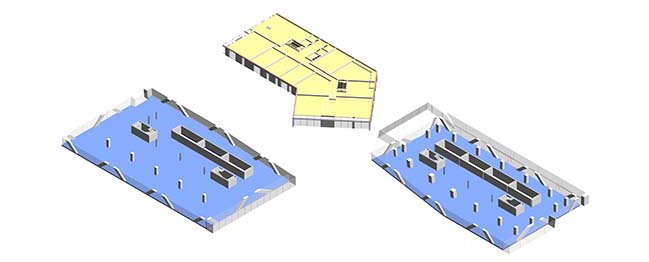
> Lagos's Wooden Tower by HKA
> Kaiserwarte: A wooden tower concept in Italy by noa*
Timber Towers by Hickok Cole Architects
04 / 05 / 2018 Timber Towers is a conceptual 62-story skyscraper by Hickok Cole that consist of two office towers linked by a connecting bridge, and a third tower containing residential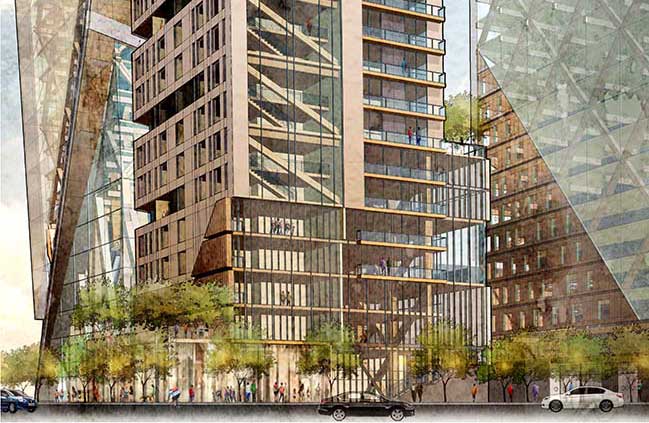
You might also like:
Recommended post: TRIPTYCH by YH2 Architecture
